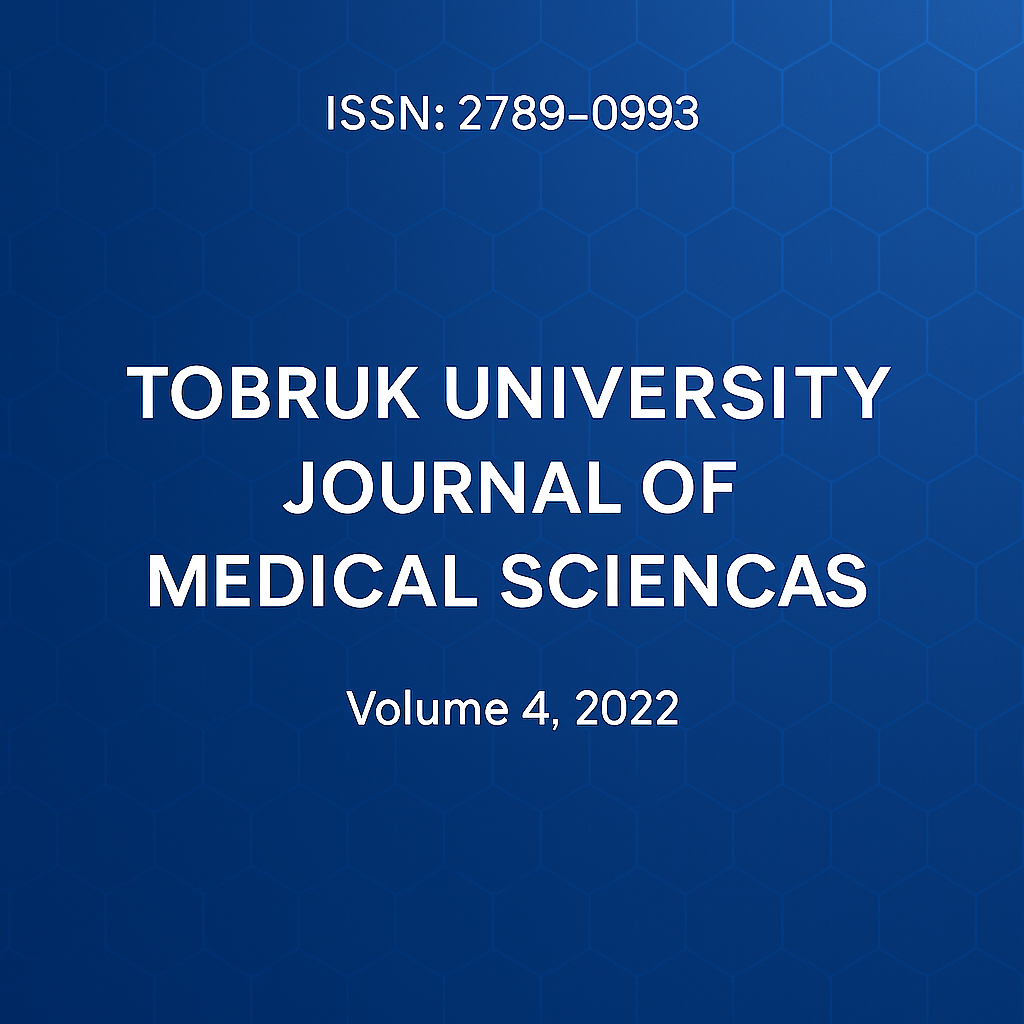Prevalence of Vitamin D Deficiency for Obese Women in Western of Libya
DOI:
https://doi.org/10.64516/hbk0r761Keywords:
Obesity, BMI, Vitamin D Deficiency, Obese WomenAbstract
Today, an association between vitamin D deficiency and obesity is well known, but the mechanisms are not yet clear. This study was designed to investigate the effect of body weight on serum vitamin D levels in obese women. The study was conducted between 1st April and 20th June 2022 for obese women (BMI ≥ 30 kg/m²). The obese women diagnosed with vitamin D deficiency were aged between 18 and 60 years. The study took place in both government and private clinics of Nutrition and Dietetics for weight loss in Tripoli, Libya. The participants' sociodemographic features, anthropometric measurements (height, weight, body mass index, hip and waist circumference), body composition (body fat mass in kg, body water content in kg), and biochemical parameters (calcium, vitamin D, triglycerides) were collected through face-to-face interviews. Serum vitamin D levels were measured in all obese women using 2 millilitre blood samples. A standard interview-based questionnaire was used to gather demographic data, including age, occupation, income, social status, illnesses, medications, and use of vitamin D, calcium, and other laboratory investigations such as lipid profile. A statistically significant relationship (p = 0.02) was found between serum vitamin D levels and BMI values in obese women. Also, there was a strong relationship between serum calcium values and vitamin D levels (p = 0.008). This indicates that women diagnosed with vitamin D levels ranging from 10 to 20 had the highest levels of calcium.
References
1. Kanazawa M, Yoshiike N, Osaka T, Numba Y, Zimmet P, Inoue S. Criteria and classification of obesity in Japan and Asia-Oceania. World Rev Nutr Diet. 2005.
2. Yazdi FT, Clee SM, Meyre D. Obesity and overweight Fact sheet N°311. WHO. 2015.
3. Kopelman P, Caterson I. An overview of obesity management. In: Kopelman PG, Caterson ID, Stock MJ, Dietz WH, editors. Clinical Obesity in Adults and Children. Blackwell Publishing; 2005.
4. Yazdi FT, Clee SM, Meyre D. Obesity genetics in mouse and human: back and forth, and back again. 2015.
5. Kushner R. Treatment of the Obese Patient. Totowa, NJ: Humana Press; 2007.
6. Bray GA. Measurement of subcutaneous fat cells from obese patients. Ann Intern Med. 1970.
7. Andres R, Elahi D, Tobin JD, Muller BA, Brant L. Impact of age on weight goals. Ann Intern Med. 1985.
8. Krotkiewski M, Björntop P, Sjostrom L, Smith U. Impact of obesity on metabolism in men and women. Importance of regional adipose tissue distribution. J Clin Invest. 1983.
9. World Health Organization. Obesity and overweight Fact sheet N°311. 2015. Available from: http://ec.europa.eu/eurostat/statistics-explained/index.php/Overweight_and_obesity_-_BMI_statistics
10. Weisell RC. Body mass index as an indicator of obesity. Asia Pac J Clin Nutr. 2002.
11. World Health Organization. BMI classification. 2014.
12. Bei-Fan Z. Predictive values of body mass index and waist circumference for risk factors of certain related diseases in Chinese adults. 2002.
13. Carmienke S, Freitag MH, Pischon T, Schlattmann P, Fankhaenel T, Goebel H, Gensichen J. General and abdominal obesity parameters and their combination in relation to mortality: a systematic review and meta-regression analysis. Eur J Clin Nutr. 2013.
14. Jebb S, Wells J. Measuring body composition in adults and children. In: Kopelman PG, Caterson ID, Stock MJ, Dietz WH, editors. Clinical Obesity in Adults and Children. Blackwell Publishing; 2005.
15. Bovbjerg VE. The epidemiology of obesity: Causal roots - Roots cause. In: Blass EM, editor. Obesity: Causes, Mechanisms, Prevention and Treatment. Sunderland: Sinauer Associates, Inc.; 2008.
16. World Health Organization. WHO Physical Inactivity: A Global Public Health Problem. 2009.
17. Donoghue S, Khoo L, Glickman LT, Kronfeld DS. Body condition and diet of relatively healthy older dogs. J Nutr. 1991.
18. Grundy SM. Obesity, metabolic syndrome, and cardiovascular disease. 2004.
19. Bojanowska E, Ciosek J. Can we selectively reduce appetite for energy-dense foods? An overview of pharmacological strategies for modification of food preference behavior. Curr Neuropharmacol. 2016.
20. Brown S. Obesity linked to lower vitamin D levels. WebMD. 2010. Available from: www.webmd.com
Downloads
Published
Issue
Section
License
Copyright (c) 2022 Ambaraka Eid.H. Kreim, Fawzia Altarhoni, Gamal Abdulhamid Elhassadi (Author)

This work is licensed under a Creative Commons Attribution 4.0 International License.











